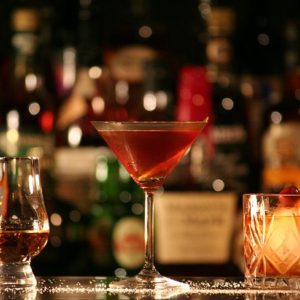
Oh December! Month of holiday parties, family gatherings, and the occasional overindulgence.
You can find a ton of articles out there about how to manage your nutrition during the holidays – but what about the cocktails?
Let’s be realistic – some of us enjoy a drink from time to time. And at derby parties, the drinks tend to be a-flowing. So, how do we make our beverage choices a little bit healthier, and a little bit easier on us the next morning? Read on…
What is booze made of?
When we talk about the alcohol we drink, we’re talking about ethanol. Ethanol is a by-product of the fermentation of carbohydrates like barley, wheat, corn or fruit. It is not a nutrient, and it provides 7 calories per gram.
Generally, a standard serving is 15 g of ethanol (105 calories) – like you would find in 12 oz beer, 5 oz wine or 1.5 oz spirits. Again, generally, a moderate drinker is someone who consumes 1-2 drinks a day, or up to 30 g alcohol.
The downside
We all know that drinking too much isn’t great for us, so I won’t harp on the potential dangers of alcohol abuse. I will, however, mention a couple of things you should know before you go gangbusters on the bar:
- There are associations between alcohol intake and body fat. While increased alcohol consumption doesn’t always result in increased body fat, its extra calories need to be considered when tracking your macros. Alcohol fills up your calorie count quickly, but provides you with no useful nutrients.
- Chronic alcohol use can also impair pancreatic functioning, leading to trouble absorbing nutrients and insulin resistance. Insulin resistance means that your body has issues forming glycogen, your energy stores become depleted and your cells create excessive lactic acid – this means even the food you do eat, and the activity you engage in aren’t benefiting your body as much as they would if you drank less or not at all.
- Heavy alcohol consumption (more than 50g/day – also 3 beers) also diminishes the liver’s ability to convert vitamins into useful fuel for your body.
- Alcohol increases GABA (an inhibitory chemical messenger) release in the brain – Release of GABA calms us down, which is why boozing it up makes you feel sleepy. That said, because GABA is an inhibitor, your sleep quality after alcohol consumption is often poor and interrupted.
The upside
There is some science supporting the benefits of small amounts of alcohol consumption. Most of these benefits are only felt by those who keep their drinking light to moderate (1/2 to 1 drink per day).
- Some drinking seems to be good for the heart and circulatory system, especially for those who are at risk of developing heart disease.
- Some studies suggest that moderate alcohol consumption may raise HDL (good cholesterol).
- Moderate drinking can be fun – it can relieve stress and lower social anxiety.
It’s tough to say that light to moderate drinking is for sure good for you, since we can’t track all of the markers that conservative drinkers have going on in addition to casual alcohol use. It may be that a small amount of booze is good for you, or it may be that those folks who are able to keep their alcohol consumption moderate have something else going on in their life that’s keeping them healthier.
The reality
Some of you are going to drink. And there’s nothing wrong with that. If you don’t currently drink, maybe don’t start – you’ll likely stay healthier in the long run. Here’s an awesome article from Precision Nutrition that digs into the science of drinking v. abstaining.
If you’re going to drink, there are lots of ways that you can keep your health and fitness goals on track. Here are some rules of thumb:
As we mentioned before, alcohol is made from fermented carbohydrates. Some of those carbohydrates remain after fermentation in all wine and beer. Those carbs can accelerate fat storage. That means that when you drink, calories from alcohol take priority over other ones and your body’s fat burning ability slows down.
So how can I drink, but still crush my workout like a beast the next day?
If you want to minimize the caloric toll, minimize the sugar and carbs.
- Beer – Sorry beer-lovers (and I am among you), downing the brews means downing empty carbs and calories. No dice.
- Wine – If you’re going to drink wine, keep it dry. Reds: Pinot Noir, Merlot or Cabernet, Whites: Chardonnay, Sauvignon Blanc or Viognier. Check your wine dryness rating, the closer to 0, the better.
- Champagne – Only a Brut, which has very minimal added sugar.
- Straight liquor – Hard spirits have no carbs (but keep in mind they are still empty alcohol calories). Mix these spirits with sugarless mixers – Vodka and Seltzer (Club Soda), with a twist of lime.
Booty’s Tip: “I like a Gin and Tonic as well as the next gal, but tonic has a ton of sugar. I always order Gin and Sonic instead (still working on the trademark…): Gin and Soda, with just a splash of tonic. Same flavour, 1/4 the calories or less.”
But I really want to eat vegetables with my booze!
Excellent! Have a Caesar, Canada’s answer to the Bloody Mary! All (moderately) sugarless mixers, and some added veggies to boot!
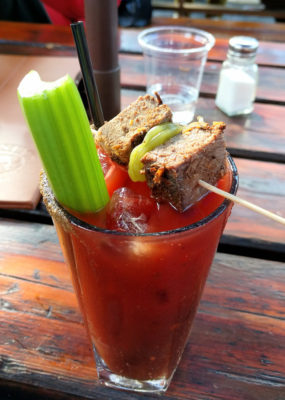
- Rim a glass with Celery Salt if you’ve got it.
- Fill glass with ice
- Add 3 dashes Worcestershire sauce
- Next, add 3 oz Clamato juice (Americans: Clamato juice is clam and tomato juice. While clearly it sounds wretched, it is in fact amazing. Sub tomato juice if you’re a wimp or vegetarian.)
- Shake in 1-3 dashes of hot sauce
- Top with 1 oz vodka
- Season with salt and pepper
- Garnish with a celery stalk (and/or pickled bean, olive, pepperoni, peperoncini… to each their own!)
An easy way to remember the order: Start with the cheapest ingredients and work your way up.
Booty’s Tip: “While not in the ‘healthier drinking’ spirit of this post, I have to admit that it is my favourite hair of the dog after a night of poor life choices. Often found at brunch as part of the Hangover Trifecta: water, coffee, Caesar. Also, please don’t follow this advice. Coffee and booze actually make hangovers worse, even though they feel right at the time.”
The jury is still out on what exactly causes hangovers – science suggests it might be a mix of the body trying to regulate fluid levels, dehydration, nutrient depletion, poor sleep and vasodilation. Just as there is no consensus on cause, there is no consensus on cure. To try to minimize the damage you’re doing to yourself, aim to follow these guidelines.
- If you want to be a functioning human the next day, drink water and eat food. Both. Not just one.
- Your alcoholic drink count should never be ahead of your water drink count.
- Speaking of water, add some lime to yours. The vitamin A in the lime will help your liver process the booze more efficiently.
Finally, remember that drinking is a trade-off. Saying yes to shutting down the bar might mean saying no to your morning training session. Saying yes to 3-4 drinks worth of calories might mean saying no to healthier foods that could have filled your nutrient needs. Be aware of these checks and balances while you’re drinking, and decide what you want to say yes to and what’s worth saying no to.

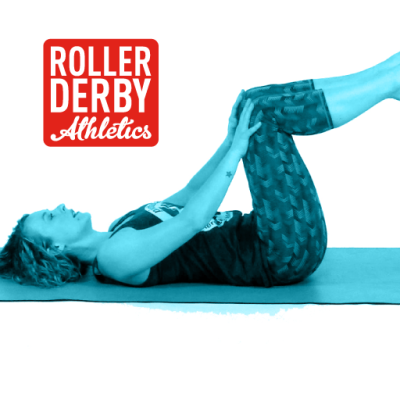 Pre-Hab: How to Engage Your Core
Pre-Hab: How to Engage Your Core  Cross-Training for Roller Derby: A Primer
Cross-Training for Roller Derby: A Primer 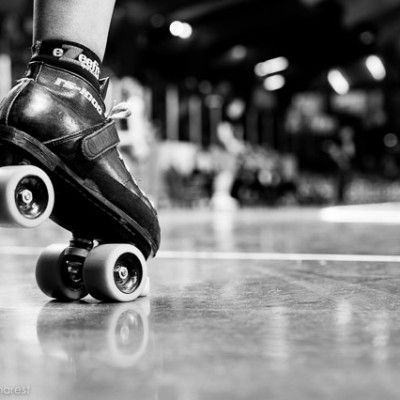 Go From Benchwarmer to MVP with the 1% Secret
Go From Benchwarmer to MVP with the 1% Secret  How to Improve at Derby’s 27 Laps Test
How to Improve at Derby’s 27 Laps Test 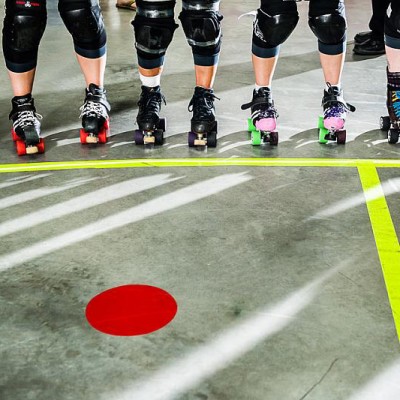 Fresh Meat – You Got This!
Fresh Meat – You Got This!